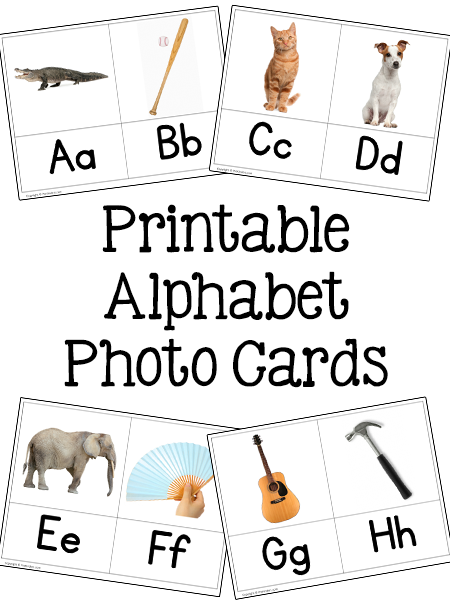I have been asked several times how I teach the alphabet. I have an alphabet activities page, but haven’t actually outlined how I go about teaching it. The way I teach it is actually nothing new, but I will tell you what I do, along with a little history on how I came to this method.

Allow me to go back in time for just a minute. Before I was a teacher, I worked in Kindergarten as an assistant for one year, and this Kinder class used a curriculum called Dekodiphukan (decode if you can), which was written by the same author who created Math Their Way. Before children were ever taught a single letter, they were taught sounds and blending. It was done through pictures instead of letters, and each picture had an action to go with it. The only one I can remember is the sound /ks/ represented by a picture of a boy breaking a stick. The only problem I could see with this program was that the children spent a large portion of the Kindergarten year learning to read pictographs instead of words. However, they did learn to blend sounds.
A few years after that, when I was teaching Pre-K, the school used Open Court Phonics. We did not have a commercially-bought curriculum in Pre-K (happily!), but we did have a set of the Open Court letter cards. The cards had the letters with a picture and little rhyme about each picture. There was also an action for each letter sound. I thought, this is perfect! This combines the idea from Dekodiphukan of teaching letter sounds with actions, but with the actual letter, not just a pictograph. A combination of letter-sound-picture-action to learn the alphabet. I have since seen several programs and alphabet card sets that teach this way. The beauty of this method is that you combine visual, auditory, and kinesthetic learning by using an alphabet with pictures and actions.
I ended up making my own set of cards with pictures and actions, because the Open Court cards were confusing to the kids (at least in this area of the U. S.) The kids couldn’t understand why pig represented letter Ii, or why lamb represented Aa. They didn’t understand why a [hound] dog represented letter Hh instead of Dd. When they looked at that card, they saw a dog and dog says /d/, not /h/. Then there was the card for /th/ with a picture of a “thong” which I hid in the closet to save ourselves from that conversation. Where I live a flip flop is a flip flop, and a thong is underwear with strings.
So, anyway, I ended up making my own set of letter-sound-picture-action cards, and I made the decision to use real photographs rather than cartoonish pictures. You can download my homemade set below.
When I introduce these letter cards, I start out with the first letters of the kids’ names. If I have kids named David, Peyton, Katie, and Zoe, then we start with letters Dd, Pp, Kk, and Zz. I have no particular order that I go in. There’s no letter of the week. I show them the card with the letter and picture, and I tell them the sound and show them the action all at once. I’ve heard of teachers teaching the letters first and then the sounds, but I don’t quite see the point in that. We learn it all at once: letter, picture, sound, and action. We also learn both uppercase and lowercase letters at the same time. Each day, we practice a few letters. I show a card, and we do the action while saying the sound, e.g. we jump for the letter Jj. I want to make it clear, children are never required to learn all of the letters, are never under any pressure, this is all about exposure. It’s all done in a playful way, and this activity of doing actions with letter sounds is no different from any other movement activity.
With the alphabet cards I made, I tried to use pictures that make sense for the sounds, as much as possible, but I’m sure there are some flaws. I have a dog picture for letter Dd, an alligator for Aa. For Cc, I used a cat, and for Kk, I used a kitten. The actions for both of those letter sounds are the same because the sounds are the same. That was to show children that those two letters (C and K) can make the same sound. The letters are the same, yet different while the pictures are the same, yet different. I chose a picture of an ax for letter Xx because the letter X with the /ks/ sound is most often at the end of a word. If you use a xylophone picture, that’s a Zz sound, and if you use an X-ray, you’re only saying the letter, not the sound. You could argue that I’m confusing the kids because ax begins with the /a/ sound, but no alphabet could be perfect when it comes to the letter Xx.
This is how I teach the alphabet through actions connected to letters, sounds, and pictures.
Download the Photo Alphabet Cards

Download: Alphabet Cards Printable
These are the printable actions to go with the cards. You can print these in PDF or DOC (the DOC version can be printed on Avery 8163 labels). Stick these on the back of each alphabet card.


